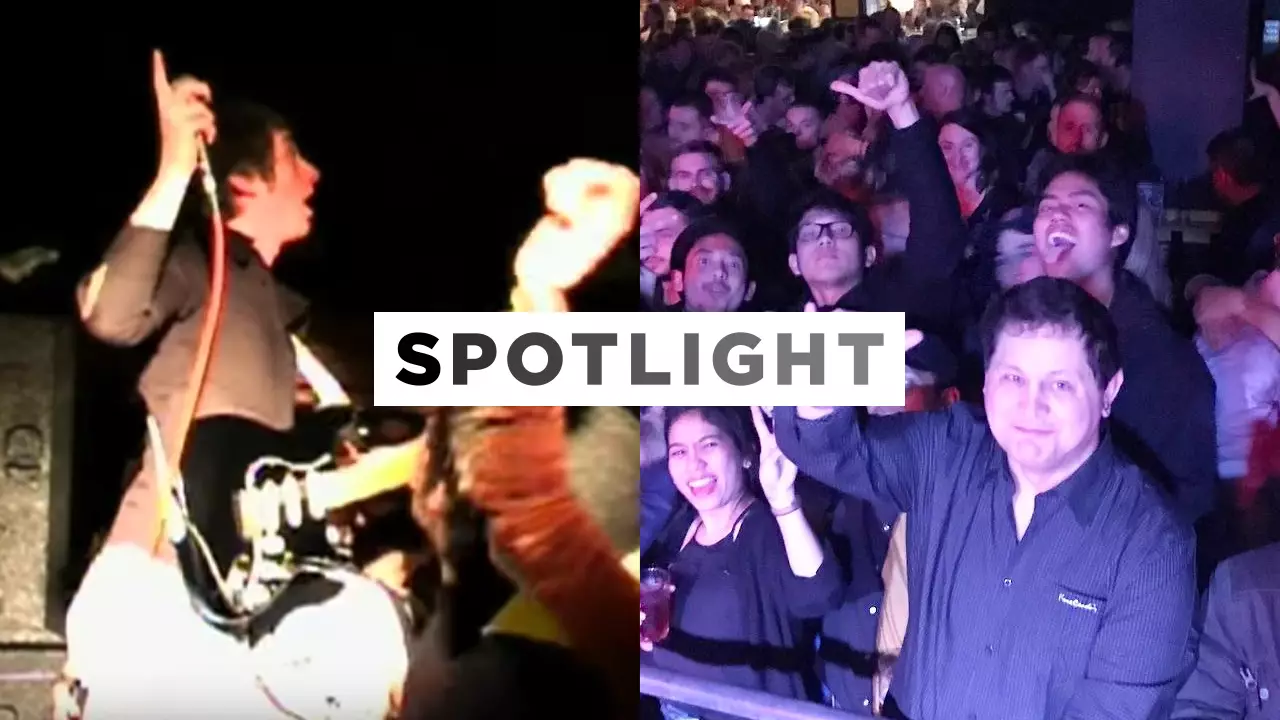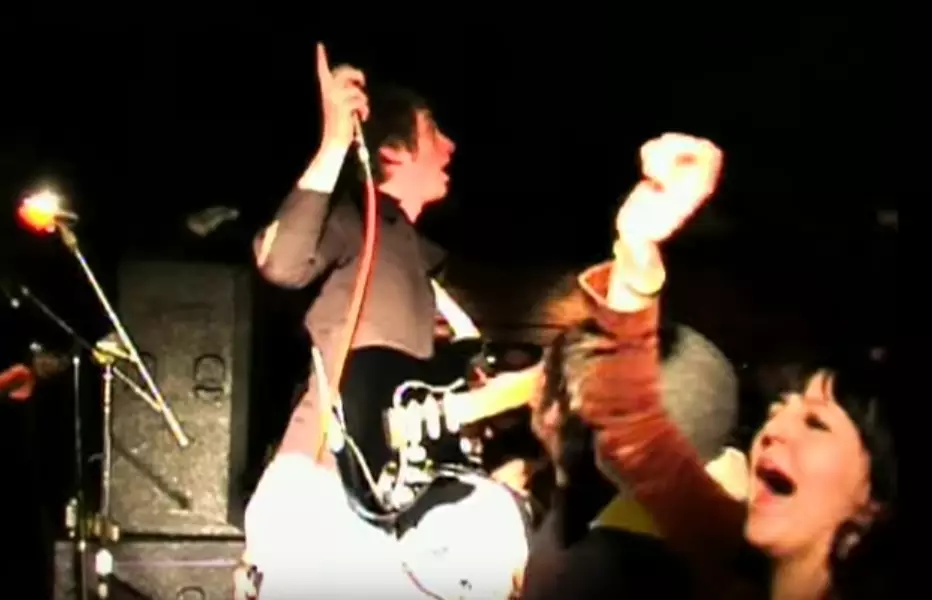
When you cast your mind back to your adolescent years, you can probably remember yourself stood in a dimly lit room, sweating, facing a stage with a can of Red Stripe in your hand, waiting to get involved in an impending mishmash of jumping and mosh pits.
The reality is that from 2000 until a few years ago, paying a fiver or so to see a local band, or an independent outfit that has travelled from a neighbouring city, was one of the preferred things to do. Those who did that type of thing all have a story, and find themselves reminiscing, though if they plan to return to bring back some nostalgia, they face a problem.
The places they used to knock about in are either closed or no longer showcasing local talent like they were used to, meaning they stand at the back swaying, immersed in a culture they know nothing about, looking like a dad who's hit a midlife crisis hard.
In 2016, for the first time since 2007, the number of grassroots venues in England's capital had remained stable, according to numbers shown by a report from the Mayor of London marking Independent Venue Week (35 percent of London's venues have been lost since then). Though this is good news, it doesn't deter from the fact that for nearly 10 years the numbers have dwindled and declined.
Advert
Despite the topsy-turvy stability, grassroots venues remain important to UK music, as Mark Davyd, founder and CEO of Music Venue Trust, a UK charity that aims to preserve, improve and protect venues for the benefit of communities and upcoming artists, tells TheLADbible.
"Grassroots Music Venues play a number of unique social, cultural and economic roles; those can be important to just the local community or integral to the success of UK music around the globe."
"The three big success stories of British music in 2015/2016 were Ed Sheeran, Adele and Coldplay. On the live market, it was Muse, or breakthrough successes like Bring Me the Horizon.
"Every single one of those acts has performed dozens, if not hundreds, of shows in the grassroots sector looking to build skills and audiences.
Advert
"Their activity now creates thousands of jobs and is worth many millions to the UK economy. We can throw all that away by failing to invest in our grassroots, or we can take the long-term view, make some minor alterations to how we do business and how we support this vital sector."
There's no way to clearly pinpoint why there is such a decline surrounding these places, but it is crystal clear how important they can be for musicians looking to break free from their home town, move across the country, and hopefully the world.
Of course, all artists have to start somewhere. Social media sites such as MySpace have come and gone, with Facebook now dominating and putting tracks on Soundcloud is easy.
But the live element is especially necessary today, despite the fact that social media is so accessible to bands. It's where an act comes to life - and where better to do it than in a close and intimate setting?

A young Alex Turner gets involved with the crowd at an early Arctic Monkeys gig. Credit: Domino Recording Co
Advert
"The venues do the single most important thing that starts those careers; they give them a chance," Davyd says. "Every day across the UK, hundreds of new artists are taking their first step towards a possible career by putting a tentative foot on one of these stages.
"For some of them, it will be the start of a long journey to awards and recognition, for others it will simply be something great they experienced. But everyone, wherever they are going, needs somewhere to start."
Through the 90s and early 00s, certain venues would have hosted a plethora of names, giving them a platform to show off their talent, way before a formal deal was made with a record label.
King Tut's Wah Wah Hut, a small concert hall in Glasgow, which was named after a club in New York, put on The Verve, Radiohead and Oasis in the space of two weeks in 1993, and was the place where Oasis were offered their record deal with Creation. It also had the likes of Biffy Clyro, Coldplay, Beck, Blur, Crowded House, White Stripes, The Strokes, Franz Ferdinand, Paramore and Travis play it early in their careers.
Advert
It's a simple example of what a club of this size can do, and the reputation it can gain. It's main purpose was to create a platform for promoting bands at that level.
Nowadays, acts that rely on that exposure struggle compared to 10 or 15 years ago. Davyd puts this down to a mixture of tour profits declining, and pay and venues decreasing.
"The tour support money from labels evaporated in that time, and external costs and pressures on the venues exploded," he told TheLADbible. "The result of both is that the cost of touring and the money that can be made from it at this level is completely out of sync.
Advert
"Bands used to be able to tour Kent. That was an actual thing - you could make a living out of playing 15 dates in one county - be a big band in Kent. That's gone.
"We need to get more venues open, and we urgently need to tackle costs and the distribution of available funding to make touring viable. Artists and the audience experience should be the focus of everything we do, but the best way to achieve that is to take a look at the basics - what's the PA like, how do the lights look, how good is the backstage? Get great spaces and you'll get great artists, technicians, producers, promoters."
You'd probably expect that social media outlets mentioned above, as well as video streaming sites like YouTube, may have interfered with the business small clubs bring in, given that the ability to see or listen to live music is there at the touch of a button, though in fact it hasn't made much difference.
There are, however, two major potential pitfalls. The first is gig-goers recording huge chunks of a gig on their smartphone and uploading the footage to social media and the like, and the second being that they are experiencing the show through a device. Last year, during Adele's world tour, she called out someone for filming her, saying that she'd rather they just experienced it in the moment, rather than through a lens.
"The rise of digital has impacted on just about every sector of the music industry, and we can argue whether that impact has been positive or negative," Mark Davyd says. "But when it comes to grassroots music venues, technology and the Internet have had almost no impact at all on what you actually experience.
"Walking into one of these venues today is almost exactly the same as it was 30 or 40 years ago. That's both amazing - that there is a core experience here which is essential to how people engage with music - and terrifying, in that the whole sector needs great ideas to come in and connect it with technology.
"We've been having a lot of conversations with developers in the last 12 months, and we think digital and the Internet is going to be a major theme of this year's Venues Day in October. But has it had any impact so far? Most venues will tell you that there are a lot of camera phones getting in the way, but other than that, we aren't seeing connectivity between the digital space and the grassroots live experience and that needs to change."
So, given all this, there needs to be a plan. And there is. What is being done to keep the numbers consistent? What is being done to make sure grassroots venues don't die out altogether?
"We've worked closely with the team at the Mayor's Office and at the Greater London Authority (GLA) to first of all make the case, getting the evidence about what is happening, and then to propose practical steps; amendments to planning, licensing, adopting agent of change," Davyd said.
"It's great to see the situation stabilise, but the real work is in getting London grassroots music venues back to health and new ones open. It's an ongoing challenge.
"Each one of these venues contributes disproportionately to the pipeline of UK talent - we estimate circa £500,000 per year per venue going into supporting new and emerging talent. We need a major overhaul of how these venues' work is respected, acknowledged and rewarded."
Venues Day 2017, a national networking event for Grassroots Music Venues and related professions, will take place on October 17 this year, at Ministry of Sound, London.
The day will feature a full programme of panels, sessions, workshops, one-to-one advice and opportunities to talk to people who understand the sector and offering ways to help venue owners.
You can check out the full Rescue Plan for London's Grassroots Music Venues and its progress here. To find out more about this year's Venues Day, take a look here.
Grassroots music venues are a big part of culture and community in a town, borough or city, inspiring the area to be musical. The absence of one causes a lack of music activity. Such venues attract audiences who help support other parts of the night-time economy like restaurants, pubs, bars, clubs and transport.
They help artists that you like, and think deserve to be listened to by more people, get more attention. This is done with no expectation of direct financial reward. This loss-making activity benefits the UK music industry and you and me, as audience members.
Featured Image Credit: InstagramTopics: Music